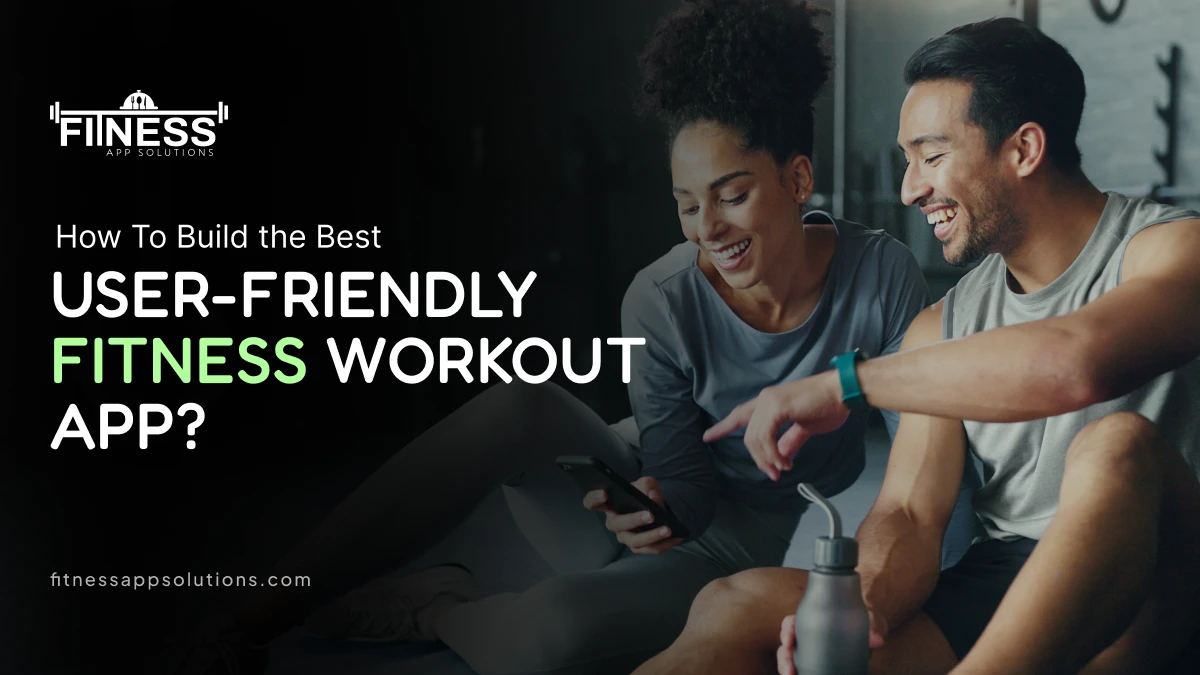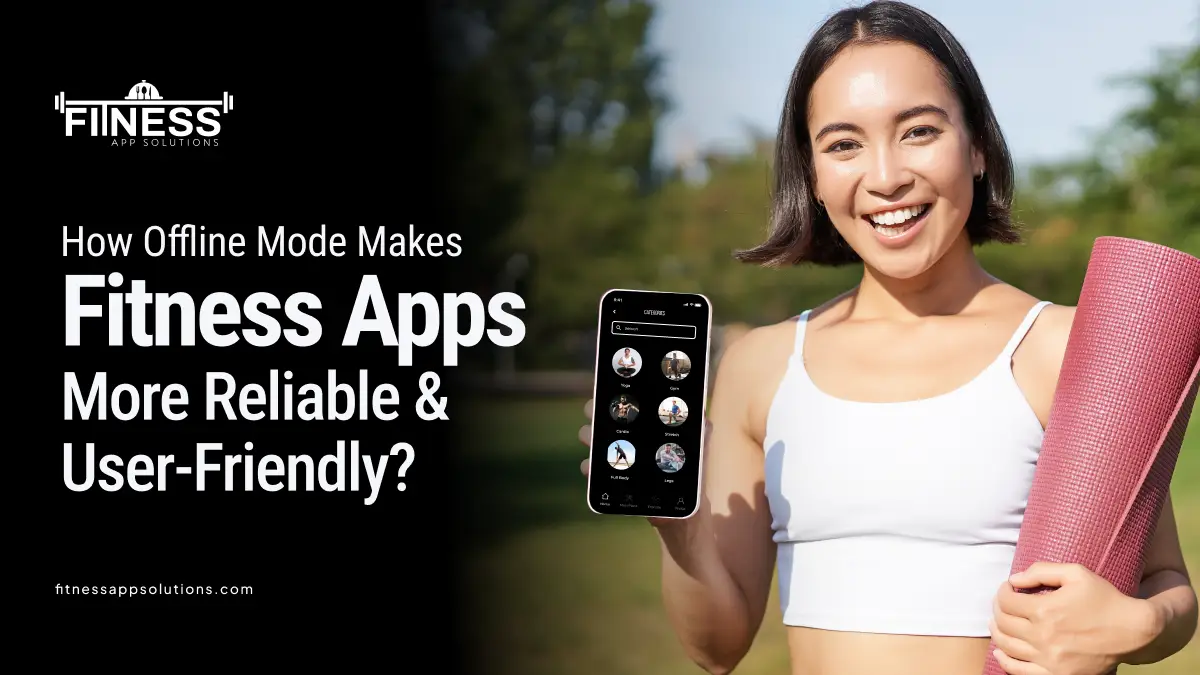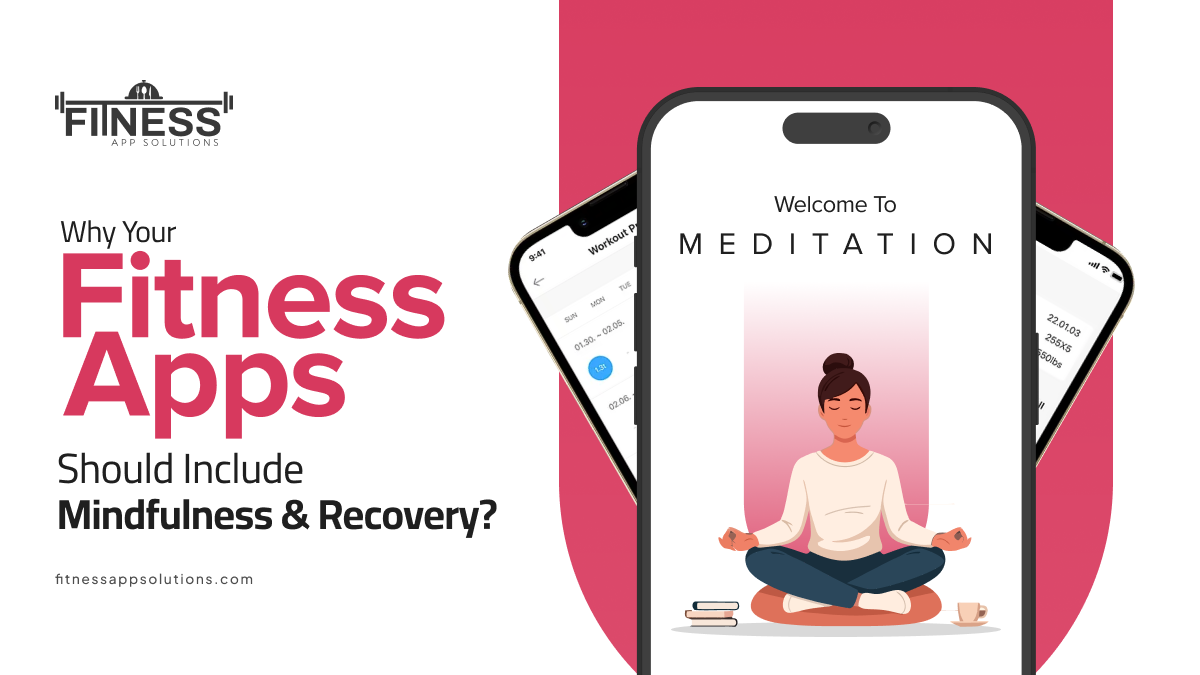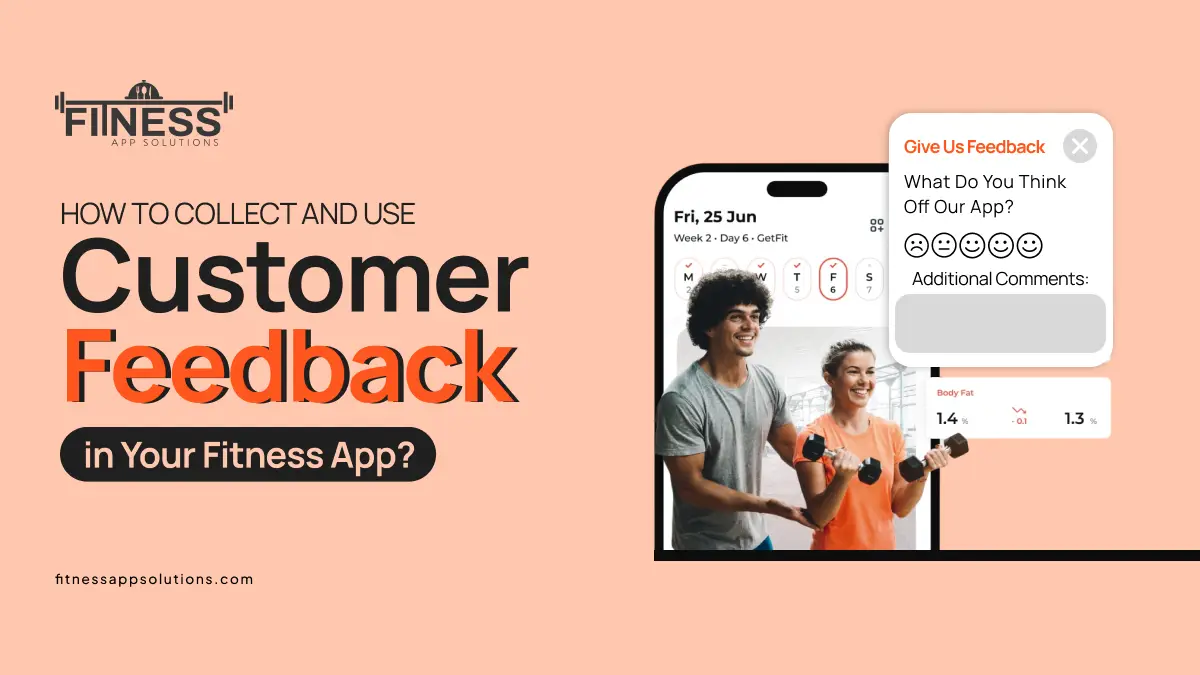The demand for fitness apps has grown explosively. The size of the global fitness app market is likely to grow up to $15.96 billion by 2027 with a CAGR of 21.6% from 2020-2027. There is an enormous opportunity for business people and developers to create innovative products that can fulfil the fitness needs of the users. This blog will thoroughly explore the process of how to build a fitness app for users, starting with market research and moving to design, development, and marketing.
How to Build a Fitness App?

Step 1: Define Your App’s Purpose
It is essential to describe the basic purpose of your fitness application prior to development to develop a user-friendly app. Have a look at these kinds of fitness applications:
Workout Apps: These apps focus on guided exercises, exercise lessons, and training routines.
Diet and Nutrition Apps: These apps help users track their food, calorie intake, and nutrient content.
Activity Tracking Apps: These apps monitor physical activities such as running, cycling, and walking.
Personal Trainer Apps: These apps provide personalized training plans and individual coaching.
Meditation and Wellness Apps: These apps encourage mental well-being and wellness through guided meditation and mindfulness exercises.
Selecting a niche based on your experience and target audience will lay the groundwork for your app’s success.
Step 2: Identify Key Features
In the process of creating a user-friendly app, user experience and engagement features are paramount. The following are some of the most relevant features:
User Profile & Authentication: Make it possible for users to create profiles via which they can set fitness goals, track progress, and customize their experience. Use secure authentication mechanisms such as email verification or social sign-ins.
Workout & Exercise Plans: Provide a library of guided workouts and adaptable routines. Users should be able to filter exercises based on their fitness level, duration, and equipment used.
Diet & Nutrition Tracking: Provide calorie counters, meal planning, and nutritional information. Users should be able to record their meals and track their daily caloric intake.
Wearable Device Integration: Support synchronization with popular wearable devices such as Fitbit, Apple Watch, and Garmin. This enables users to track their fitness and health parameters easily.
Push Notifications & Reminders: Send targeted reminders to encourage users to maintain their fitness goals. Reminders can be for workouts, meal preparation, and motivational messages.
Community & Social Features: Establish a community within the app where users can compare themselves, participate in challenges, and interact with other users. This induces a sense of belongingness and drives them.
AI-driven Recommendations: Employ artificial intelligence to give users personalized training plans and nutritional advice based on preference and progress.
Gamification: Implement gamification elements such as challenges, rewards, and leaderboards to motivate and engage users more.
Step 3: Select the Proper Tech Stack
Having the right technology stack is essential for the functionality, scalability, and performance of your app. Some technologies that are suggested here are:
Frontend Development
React Native: A well-known framework to develop cross-platform mobile apps in JavaScript.
Flutter: Google’s UI toolkit for developing natively compiled applications for mobile, web, and desktop from a single codebase.
Backend Development
Node.js: A JavaScript environment based on Chrome’s V8 engine, used for creating scalable network applications.
Django: A high-level Python web framework that facilitates rapid development and clean, pragmatic design.
Ruby on Rails: A Ruby server-side web application framework that is simple and fast.
Database
Firebase: A cloud-based service that offers real-time database operations and user authentication.
PostgreSQL: A high-performance, open-source relational database.
MongoDB: A NoSQL database that stores data in loose, JSON-like documents.
Cloud Services
AWS: Amazon Web Services offers a wide range of cloud computing services including storage, databases, and machine learning.
Google Cloud: Provides a variety of cloud computing services based on the same infrastructure that Google’s end-user products run on.
Azure: Microsoft’s cloud-based computing platform that offers various services to create, host, and manage applications.
AI/ML Integration
TensorFlow: An open-source machine learning environment that can be used to create AI models.
OpenAI: Provides APIs to integrate advanced AI capabilities in your app.
Step 4: Design a User-Friendly UI/UX
Excellent UI and UX design are crucial for maintaining the users. Certain design tips are provided below:
Clean Interface: Ensure the layout is simple and understandable. Ensure that it’s clutter-free and useful features are easily accessible.
Attractive Colours: Choose a colour scheme that motivates the users. Bright and dynamic colours can create the whole user experience more thrilling.
Easy Navigation: Offer clear buttons and icons to allow simple navigation. Users should easily find things with no confusion.
Visual Progress Indicators: Employ graphs, charts, and streaks to offer visual indicators of user progress. This might motivate the users to stay engaged in their fitness goals.
Responsive Design: Ensure your app is responsive and responsive across various devices and screen sizes. Test your app on iOS and Android platforms.
Step 5: Create and Test Your App
With the design done, it is time to start the development phase:
Create an MVP: Release a Minimum Viable Product (MVP) with a bare minimum of necessary features to test market acceptance. This allows you to gain feedback from users and implement any necessary adjustments before a full-scale release.
Test Exhaustively: Conduct unit tests, beta testing, and user testing to locate and fix bugs. Testing needs to cover all aspects of the app, including functionality, performance, and security.
Collect User Feedback: Use feedback from beta testers to polish the app. Consider adding a feedback mechanism to the app to leverage users’ opinions once launched.
Step 6: Monetization Strategies
Monetizing your fitness app is the way to sustain yourself in the long run. Some profitable revenue models to adopt are:
Freemium Model: Offer standard features at no cost but premium subscriptions for longer features. This model provides an opportunity for the consumer to test the app before committing to a buy.
In-App Purchases: Make money off workout routines, diet plans, or fitness gear through the app itself. This will be a steady source of revenue.
Advertisements: Partner with gym and exercise companies for placing ads inside the app. Maintain the ads relevant to your users’ requirements to keep them engaged.
Affiliate Marketing: Offer fitness products and earn commissions on sales generated through your app. This can be with referral links to exercise equipment, supplements, or exercise plans.
Step 7: Launch and Market Your App
The importance of a well-crafted marketing strategy cannot be overemphasized in order to reach a wider audience and ensure the success of your app:
App Store Optimization (ASO): Optimize the app title, description, and keywords for maximum visibility on app stores. Tag your app with relevant keywords to attract your target audience.
Social Media Marketing: Promote your app on platforms like Instagram, TikTok, and YouTube. Post motivational content, workout tips, and success stories to attract users.
Influencer Collaborations: Partner with fitness influencers to enhance visibility and credibility. Influencers can endorse your app to their audiences, resulting in downloads and activity.
Content Marketing: Create blogs, videos, and guides on fitness trends and tips. This can position your brand as an authority figure in the fitness niche and generate organic traffic.
Conclusion
Developing a successful fitness app is a combination of having special features, easy-to-use interface, and a vision about your target audience. By following the right development process, adding the required functionalities, and focusing on user engagement, you can build your own fitness app that stands out in the competitive fitness market. If you are going to build a workout monitor, a diet planner, or a full-featured fitness application, the most crucial thing is to provide value and motivation to your users.
Frequently Asked Questions (FAQs)
What features should my fitness app include?
Your fitness app should include user profiles, workout plans, nutrition tracking, wearable device integration, and community features.
How can I monetize my fitness app?
You can monetize your app through freemium models, in-app purchases, advertisements, and affiliate marketing.
What technology stack is best for developing a fitness app?
Consider using React Native or Flutter for frontend, Node.js or Django for backend, and Firebase or PostgreSQL for the database.
How do I ensure my app is user-friendly?
Focus on a clean interface, easy navigation, responsive design, and visual progress indicators to enhance user experience.
How can I market my fitness app effectively?
Utilize app store optimization, social media marketing, influencer collaborations, and content marketing to reach a broader audience.



